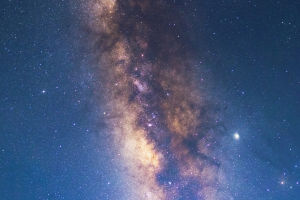Are there people on Mars?
From the photos returned by the probe, Mars is an extremely desolate, arid world, with no life, there are no legendary Martians. However, although there are no people on Mars, scientists found that Mars has long been turned into a "garbage dump", there are nearly 7 tons of waste.
What's going on? There is no one on Mars, so why is there this garbage? Is it thrown by aliens?
How is it calculated that there are nearly 7 tons of waste on Mars? This one figure was calculated by Cagri Kilic, a postdoctoral researcher in robotics at West Virginia University. Of course, it's not that he went to Mars and weighed the waste, but it's based on statistics based on human exploration of Mars.
Over the past 50 years or so, we have launched a large number of probes to Mars, including orbiters, landers, rovers, etc. Calculate the total mass of these probes to find out how much waste appears on Mars!
Cagri Kilic's calculations show that humans have sent to Mars about 22,000 pounds (9,979 kg) of probes, including orbiters, landers, and rovers, minus the mass weight of the probes still orbiting Mars of 6,306 pounds (2,860 kg), to know the weight of the probes sent by humans to Mars above 15,694 pounds ( 7119 kg).
This waste includes the rovers that crashed on the surface of Mars but also includes some rovers that have completed their exploration missions (e.g., Opportunity rover, Courage rover, etc.), in addition to some hardware that was discarded on top of Mars (e.g., decelerator parachutes, landing platforms, etc.).
Therefore, the appearance of so much garbage on Mars has turned into a "garbage dump", not because aliens have thrown garbage on Mars, but because human civilization has left traces on Mars.
Scientists are a little worried about the appearance of this garbage on Mars. Because one of the purposes of our exploration of Mars is to look for potential signs of life on Mars, and the appearance of these artifacts may "pollute" the Martian environment, thus affecting our judgment of life on Mars.
The reason for this is that although the rover is developed with attention to dust and sterilization, it is inevitable that some microorganisms will adhere to the rover and follow it to Mars. When the rover brings the microorganisms from Earth to Mars, these microorganisms either have difficulty adapting to the Martian environment and die directly, or they adapt to the Martian environment and survive.
Since the environment of Mars is somewhat different from that of Earth, such as stronger cosmic radiation, the greater temperature difference between day and night, and a drier environment on Mars, it may lead to various mutations of these microorganisms.
The end result is that if we find signs of life on Mars, there are two possible scenarios. The first scenario is that these microorganisms may only be microorganisms from Earth and not those that exist on Mars properly.
The second scenario is that the microorganisms found on Mars are actually native to Mars, but it may be difficult to tell whether these microorganisms are from Mars or from Earth. So the presence of these wastes may affect our judgment.


